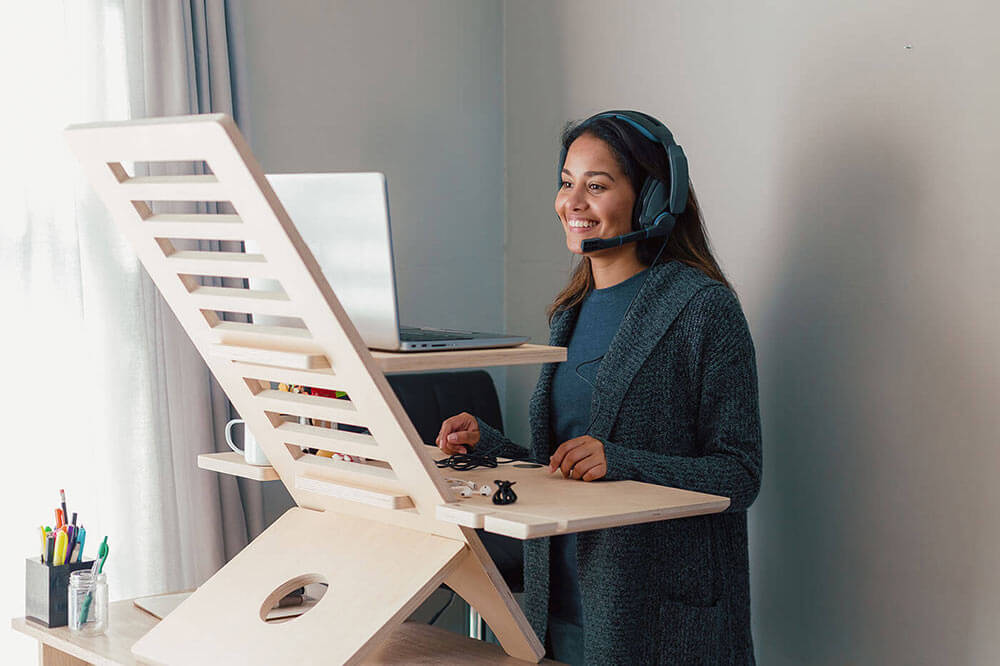
While ergonomics is a familiar concept for office workers, we often rely on the people in charge of ordering office equipment to take care of our eyes, muscles, and joints. We hope our organization prioritizes ergonomics, but we don’t know the basic concepts behind the choices they make. And even if adapted equipment is selected, correct adjustment and use of the equipment is just as important.
Because mass transition to remote work forced many employees to improvise their home office spaces, we have become entirely responsible for making sure that we don’t end up with chronic pain. Here are a few tips to get you started:
There are various online guides comparing ergonomic characteristics of different work equipment. Prices vary widely. The more design is impacted by ergonomics, the higher the price will tend to be. This article focuses primarily on position to help you make informed decisions according to the desired outcome.
First, you want to sit at a height that allows your forearms to rest flat on your desk at a 90-degree angle. Consider an adjustable chair or desk for the perfect desk and seat height. If the height of your chair prevents you from resting your feet flat on the floor, it’s recommended to use a footrest. Printer paper stacks can also work if you want to save money, but footrests often recline and prevent your ankles from pivoting in an uncomfortable way.
Let’s move on to computer screens. It is generally preferable that your screen sits at about one arm’s length. This will save your eyes. With regards to height, the top border of the screen should be at eye level in order to help preserve your neck.
If you have several computer screens, place them in front of you to avoid turning your head when looking at them. So if you have a favourite screen, place it in front of you and bring your secondary screen as close to it as possible. You can also angle the secondary screen to face you when your head is turned towards it. If you use multiple screens equally, place them so that the space between them is centred in front of you.
Now let’s talk about keyboards and mice. Remember the earlier suggestion of positioning your elbows at 90 degrees with flat forearms - ideally, you want to position your keyboard and mouse to be able to reach them in this position. Since you will use them often, having to stretch to reach them is not optimal.
Whether you invest in a keyboard with angled keys to avoid rotating your wrists, at least try to avoid mini keyboards that position your forearms in a triangle fashion. Ideally, your arms should be as parallel as possible to avoid angling your wrists and to align your fingers with the keys.
If you use a telephone, place it on the opposite side of your dominant hand. This will allow you to hold the receiver instead of bending your neck to hold it between your head and your shoulder. And if you spend a lot of time on the phone, consider getting a head set with a microphone for added comfort.
Paying extra attention to our office equipment and ergonomics will help avoid immediate pain and chronic problems later. But sitting at a desk 8 hours a day remains an unnatural position for humans. After 15 minutes of concentrated work, most of us tend to lean forward without even realizing it. That is why it’s important to stretch throughout the day and to stand up at least once an hour. Your body will thank you.
Adam Blahuta is a Development Manager for the Visual Scripting team at Unity Technologies, makers of the world-class Unity Real-Time 3D development engine. A graduate in Computer Science from McGill University, Adam has worked in the video game industry for the past 12 years, including running his own independent studio.